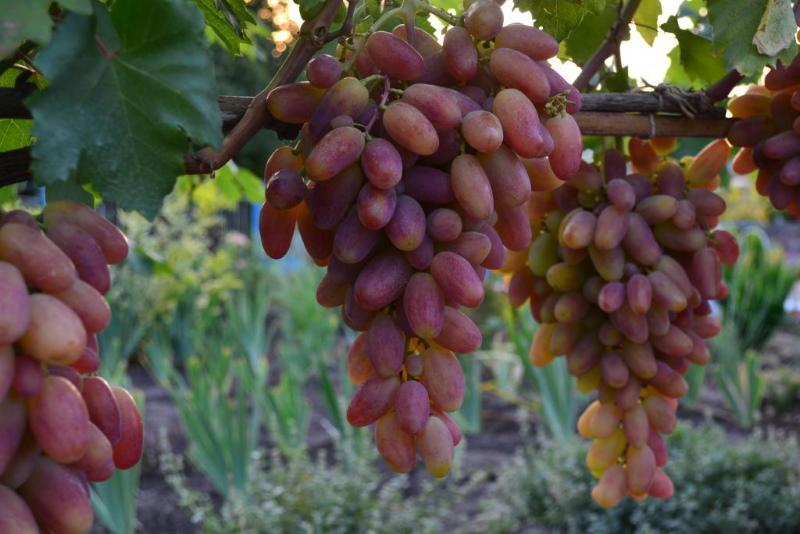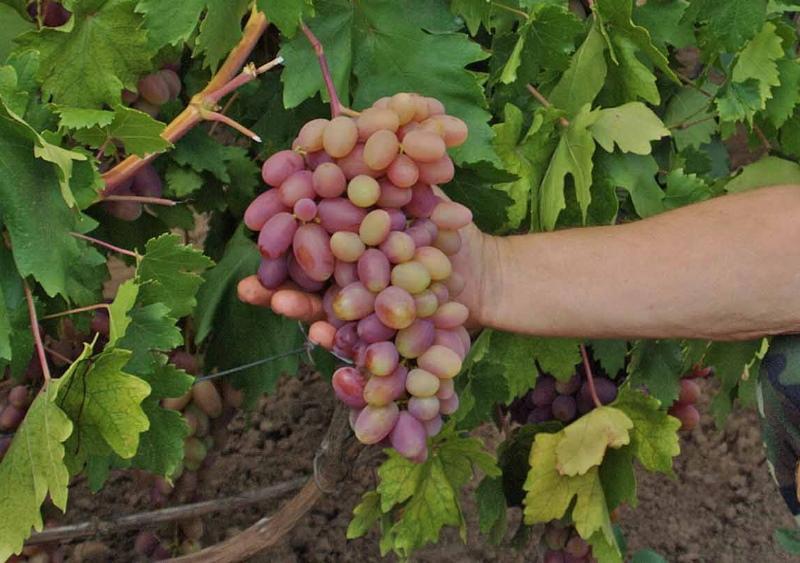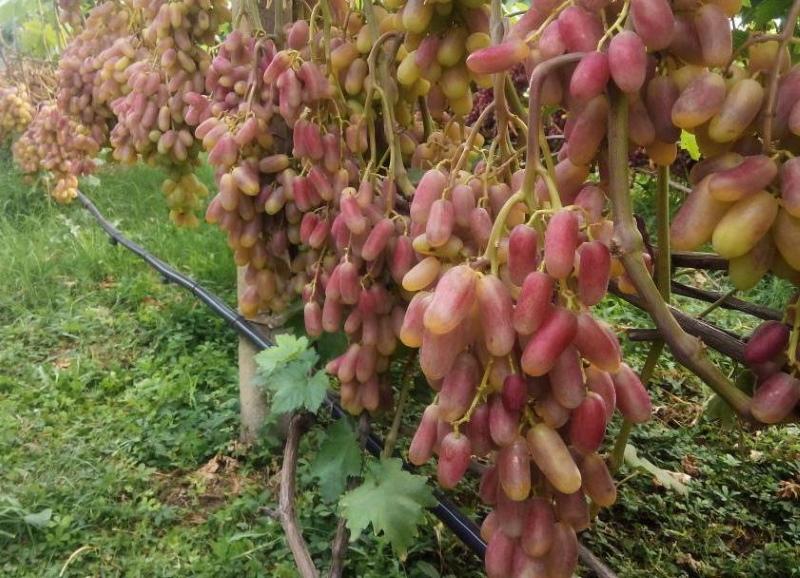Grape variety Transformation - photo and description of a new fruitful hybrid
 A young hybrid of only 6 years old is officially recognized, but it became popular much earlier. Versatility, early maturity, excellent taste and the ability to get even two harvests. This is what the Transfiguration grape variety became famous for, the photo and description of which we will study today. From his parents, varieties Talisman and Radiant Kishmish, he took the best characteristics. And it was bred by the breeder Krainov, known for his results in breeding grapes with high yields.
A young hybrid of only 6 years old is officially recognized, but it became popular much earlier. Versatility, early maturity, excellent taste and the ability to get even two harvests. This is what the Transfiguration grape variety became famous for, the photo and description of which we will study today. From his parents, varieties Talisman and Radiant Kishmish, he took the best characteristics. And it was bred by the breeder Krainov, known for his results in breeding grapes with high yields.
Grape variety Transformation - photo and description

Plant characteristic
 The Transfiguration bushes have a powerful root system, and they grow rapidly. During the season, the vine lengthens by 3 m and rises perfectly along the support. The grapes form many stepchildren and are therefore prone to overload, which is regulated by pruning and removing excess shoots. Although in warm climates, you can get a second harvest from them closer to mid-autumn.
The Transfiguration bushes have a powerful root system, and they grow rapidly. During the season, the vine lengthens by 3 m and rises perfectly along the support. The grapes form many stepchildren and are therefore prone to overload, which is regulated by pruning and removing excess shoots. Although in warm climates, you can get a second harvest from them closer to mid-autumn.
Cuttings have a high survival rate, which makes it possible to graft them on other varieties.
Grapes do not need self-pollination and have no special soil requirements. It is enough just to fertilize the soil in the planting hole. The variety has medium resistance to diseases, its frost resistance is at the same level. Vineyards hibernate without shelter at temperatures down to minus 23 ° C. But the berries in bunches are all almost the same size, without peas.
Taste and yield
 The variety belongs to ultra-early, ripens after 3 months. The yield every year remains high - up to 20 kg per bush. Loose brushes are tapered and weigh about 1 kg on average. The berries themselves are large, the weight of one can exceed 20 g, and the length is 5 cm. They do not ripen at the same time, changing color from pink-green to almost red. The grapes adhere tightly to the bunches, do not crumble, do not crack.
The variety belongs to ultra-early, ripens after 3 months. The yield every year remains high - up to 20 kg per bush. Loose brushes are tapered and weigh about 1 kg on average. The berries themselves are large, the weight of one can exceed 20 g, and the length is 5 cm. They do not ripen at the same time, changing color from pink-green to almost red. The grapes adhere tightly to the bunches, do not crumble, do not crack.
The dense skin has a waxy coating, hiding underneath a fleshy juicy pulp. Her aroma is practically inaudible, and there are usually no more than 3 seeds, and even then they are small.
Transfiguration is considered a table variety - they eat grapes, make juices, jams, vinegar, oil and even raisins. But thanks to its high sugar content (19%), wine can also be made from it.
Pros and cons of the variety
 Of the benefits of the Grape Transfiguration it is worth noting:
Of the benefits of the Grape Transfiguration it is worth noting:
- early maturation;
- fast growth;
- good winter hardiness (the vine ripens by 50%);
- high and stable yield, regardless of the growing climate;
- universality of use;
- rich taste;
- transportability;
- long shelf life (up to six months);
- large-fruited.
The disadvantages include the need for constant load adjustment - without this, the berries become smaller and sour. Wasps are also very fond of their juicy flesh.And don't forget about the average threshold of disease and frost resistance.